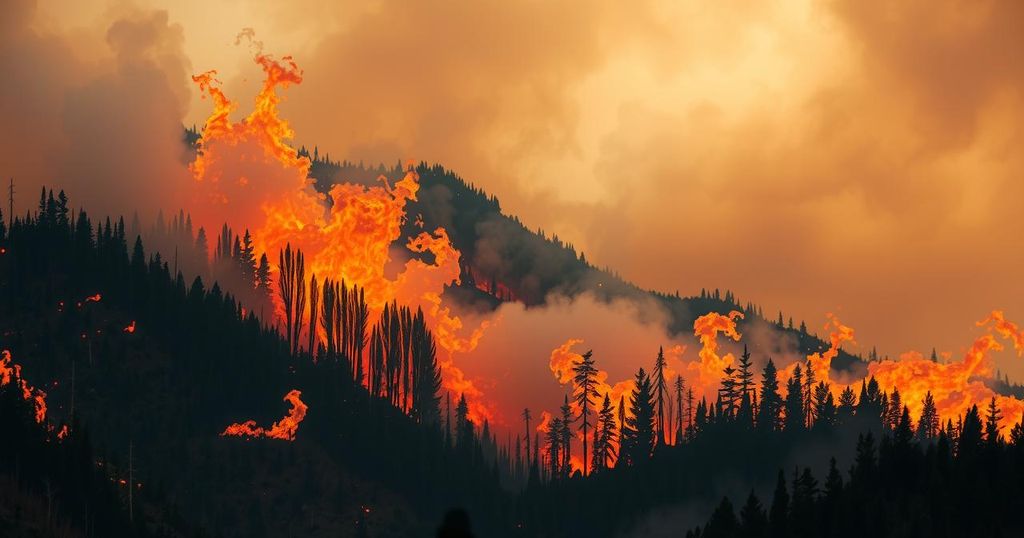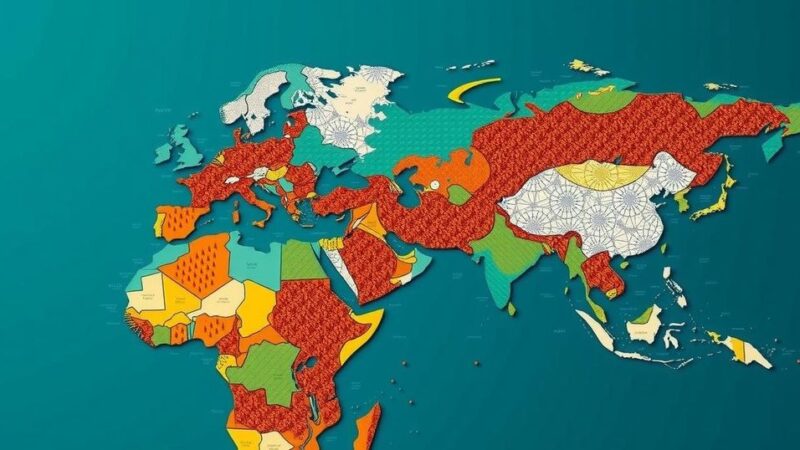Recent studies reveal a direct link between climate change and the increasing frequency and intensity of wildfires globally, resulting in a substantial rise in smoke-related deaths. While some regions like Africa show a decrease in wildfires due to human activities, areas such as California and Siberia see a surge in incidents. The findings emphasize the limited effectiveness of human interventions against the dominant effects of climate change, highlighting the urgent need for emission reductions and management strategies to address these critical issues.
Research has established a significant correlation between climate change and the rising frequency and intensity of wildfires globally, which has resulted in a concerning increase in smoke-related fatalities over recent decades. A collaborative effort involving researchers from Dalhousie University, Belgium, the United Kingdom, and Japan analyzed the impact of wildfires on human health and found alarming trends. Specifically, the research revealed that annual deaths associated with wildfire smoke escalated from under 669 in the 1960s to an alarming 12,566 in the 2010s. In a notable study published in “Nature Climate Change,” scientists compared wildfire simulations that incorporated climate change effects with those that did not. The results indicated increased wildfire occurrences and intensity in various regions, particularly in ecologically sensitive areas such as African savannas, Australia, and Siberia. However, regional variations were also highlighted: Africa accounted for a significant decline in wildfires due to increased human activity and land fragmentation, while forested regions like California and Siberia have seen a rise in wildfire incidents attributed to prolonged droughts and elevated temperatures exacerbated by climate change. Dr. Sian Kou-Giesbrecht, an associate professor in Dalhousie’s Department of Earth and Environmental Sciences and co-author of both studies, emphasized the critical nature of the research, stating, “The study is important because it shows and quantifies the influence of climate change on increasing wildfires worldwide, especially given the impacts of wildfire on society and its feedback to climate change.” The research team utilized various modeling techniques that accounted for climate, vegetation, and population density. They noted that while human interventions such as fire suppression and landscape management can mitigate wildfire spread, these efforts often prove insufficient in the face of extreme climatic conditions. “What is striking is that in periods with low to moderate numbers of fires, direct human interventions have a large effect. However, in periods with many fires, the effect of climate change dominates, meaning that in these cases we lose control,” remarked Seppe Lampe, a climate scientist at Vrije Universiteit Brussel and a leading author of the findings. The simulations demonstrated that climate change contributed to a global increase in burned area by approximately 16 percent from 2003 to 2019 and raised the likelihood of experiencing above-average global burned area months by 22 percent. The analysis also indicated a steady yearly increase in the contribution of climate change to the burnt area, with Central Australia exhibiting the most significant changes. A separate study published concurrently in the same journal addressed the rise in mortality related to wildfire smoke, attributed to climate change over five decades. Researchers employed fire-vegetation models alongside a health risk assessment framework to ascertain human fatalities linked to particulate emissions from wildfires. Their findings indicated that climate change was responsible for 1 to 3 percent of fire-related deaths in the 1960s, which surged to upwards of 28 percent by the 2010s. South America, Australia, Europe, and the boreal forests of Asia exhibited the highest mortality rates. Dr. Kou-Giesbrecht said, “It can be tricky to attribute wildfire to climate change because of the complexities of the interactions between fire weather, global change effects on potential fuel, land management and ignitions, but in these international projects we have made a robust attribution of wildfires to climate change using multiple models.” She warned that if the current trajectory of climate change persists, a significant increase in both burned land and associated health repercussions will likely occur in forthcoming decades.
This article discusses the alarming increase in wildfire incidents and resultant fatalities linked to climate change. Research conducted by international teams has highlighted the intricate relationship between wildfires and climate change variables, emphasizing the regional differences in wildfire prevalence. The study provides critical evidence regarding the exacerbation of health risks arising from wildfire smoke and underscores the importance of addressing greenhouse gas emissions to mitigate future impacts.
The studies underline the urgent need for action to combat climate change through drastic reductions in greenhouse gas emissions, along with effective landscape and fire management strategies. The significant rise in wildfire smoke-related deaths over the decades further calls for immediate measures to protect public health and mitigate environmental impacts.
Original Source: www.dal.ca






